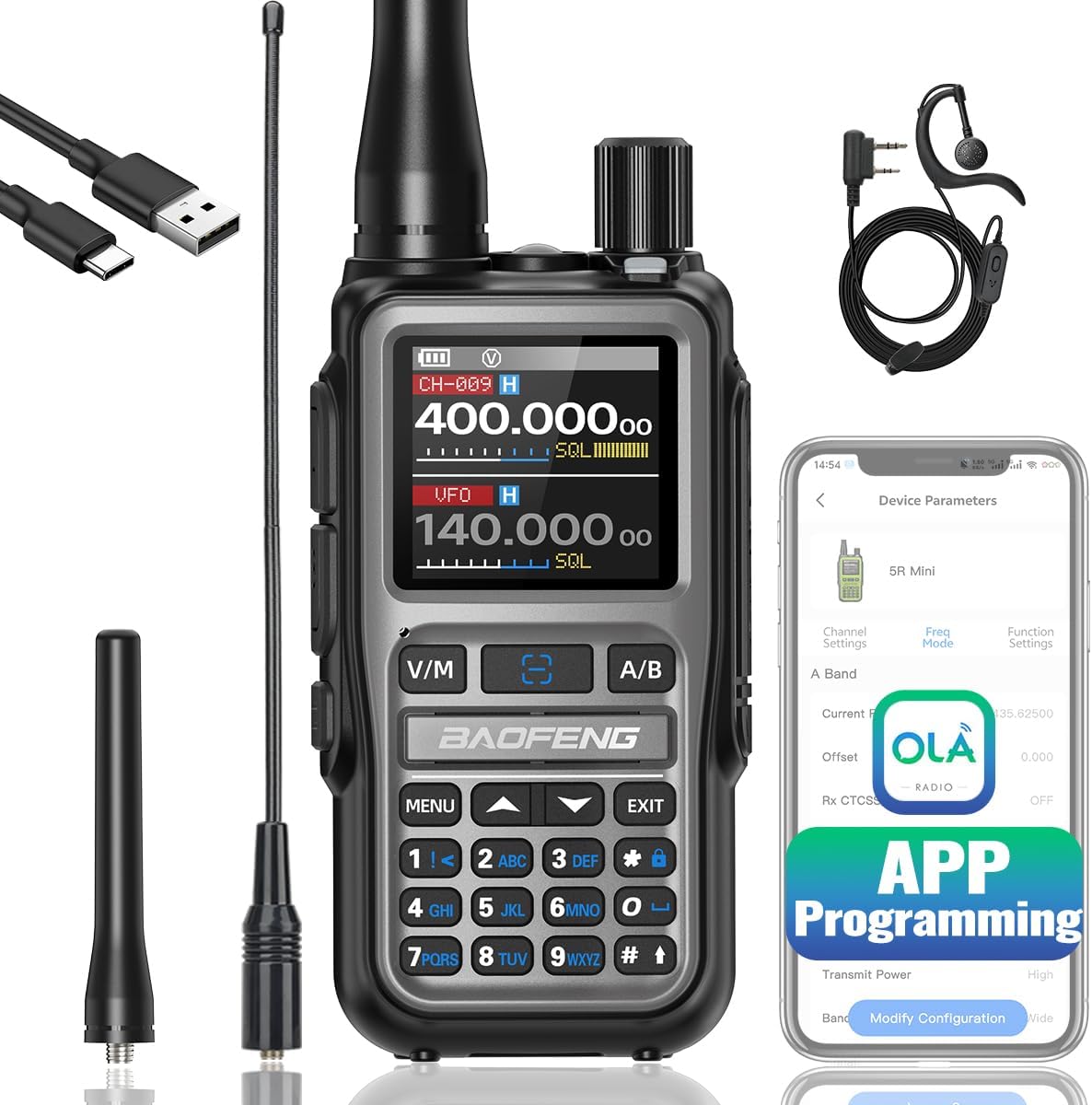
The Kenwood TS-890S is a high-end HF/50MHz transceiver designed for serious amateur radio operators who demand professional-grade performance, advanced signal processing, and robust build quality. Sitting just below Kenwood’s flagship TS-990S, the TS-890S bridges the gap between compact rigs and top-tier base stations, offering a remarkable blend of modern digital technology, classic analog feel, and operational depth.
Design and Build Quality
From the moment you unbox the TS-890S, its solid construction and premium design are immediately noticeable. The transceiver features a large, high-resolution 7-inch color TFT display with touchscreen functionality, providing quick access to menus, signal scopes, and operational data. The layout follows Kenwood’s traditional ergonomic philosophy, ensuring intuitive operation even for users upgrading from older models like the TS-590 series.
The chassis is built to last, with a reinforced metal frame that helps dissipate heat effectively during extended transmission periods. The knobs and buttons offer a tactile, responsive feel, reflecting the quality Kenwood is known for. The front panel is cleanly organized, with dedicated controls for mode selection, filter adjustment, and DSP functions, allowing for efficient on-the-fly operation without deep menu diving.
Receiver Performance
At the heart of the TS-890S is a high-performance down-conversion receiver for the 1st IF, using a 500 Hz roofing filter that ensures exceptional close-in dynamic range. This design minimizes interference and overload from nearby strong signals, making it ideal for contesting and DX environments. Kenwood’s advanced DSP (Digital Signal Processing) system, implemented at the IF stage, provides superior noise reduction, automatic notch filtering, and variable bandwidth filtering, delivering crystal-clear audio even in crowded bands.

The receiver sensitivity and selectivity are among the best in its class. Weak signal detection is handled with remarkable precision, and the audio output is clean and natural, reducing operator fatigue during long listening sessions. The TS-890S also supports direct sampling in the 70 MHz band, providing stable performance across all operating frequencies.
Transmitter and Power Output
The TS-890S delivers a solid 100 watts of output power on HF and 50MHz bands. The signal purity is outstanding, thanks to its low distortion transmitter design and clean modulation characteristics. The built-in automatic antenna tuner quickly matches a wide range of antennas, ensuring efficient operation without external tuning equipment in most setups.
Operators who prioritize signal quality will appreciate the transceiver’s low phase noise and stable frequency characteristics, even during digital operations. Whether operating SSB, CW, AM, FM, or digital modes like FT8 and RTTY, the TS-890S maintains excellent performance consistency.
Display and User Interface
The 7-inch TFT display is one of the most striking features of the TS-890S. It offers a high-speed, real-time spectrum scope and waterfall display that rival standalone panadapters. The touch interface allows users to tap signals directly on the display to tune instantly—an intuitive and efficient feature that enhances both casual and contest operation.
Kenwood’s menu system is logically structured and easy to navigate. The operator can customize function keys, display colors, and screen layouts according to personal preferences. The multi-function encoder knobs and soft keys beneath the screen further improve operational fluidity.
Connectivity and Modern Features
Modern operators will find the TS-890S well-equipped with connectivity options. It includes a USB port for computer control, digital mode operation, and firmware updates. An Ethernet port enables remote operation via the internet, allowing users to control and monitor the rig from anywhere. The built-in sound card interface simplifies setup for digital modes—no external interface box is needed.
The TS-890S also supports data logging, audio recording, and voice keyer functions directly to a USB flash drive, making it convenient for contest logging or recording QSOs. The transceiver is also compatible with Kenwood’s ARCP-890 software, enabling advanced control and configuration from a PC.
Performance in Real-World Use
In practical operation, the Kenwood TS-890S proves to be a reliable and powerful station centerpiece. Its receiver’s ability to handle strong signals with minimal intermodulation distortion makes it excellent for contesting. The DSP tools are effective at pulling out weak signals in noisy environments, especially during poor propagation conditions. The transceiver’s audio quality, both transmitted and received, is clean and natural, maintaining Kenwood’s long-standing reputation for superior sound.
During digital operation, the internal sound card and stable frequency control make the TS-890S a dependable performer. Operators can easily switch between modes and manage band conditions efficiently using the advanced display features and on-screen spectrum analysis.
Pros
-
Exceptional receiver performance with advanced DSP
-
High-quality 7-inch color touchscreen display with waterfall and scope
-
Clean transmit audio with 100W output
-
Built-in automatic antenna tuner and internal sound card
-
Excellent remote operation capabilities via LAN and USB
Cons
-
Heavier and larger than some comparable transceivers
-
Some features may be excessive for casual operators
Conclusion
The Kenwood TS-890S is a top-tier transceiver that successfully blends analog craftsmanship with cutting-edge digital performance. It offers the kind of receiver quality, operating flexibility, and visual interface that experienced amateur radio enthusiasts demand. Whether used for DX chasing, contesting, or digital operations, it provides outstanding performance across the board.
For those seeking a robust and modern HF/50MHz transceiver built to deliver for years to come, the Kenwood TS-890S stands as one of the best choices available. It reflects Kenwood’s continued dedication to producing radios that not only perform superbly but also feel exceptional to operate—an investment that truly rewards serious amateur radio operators.



